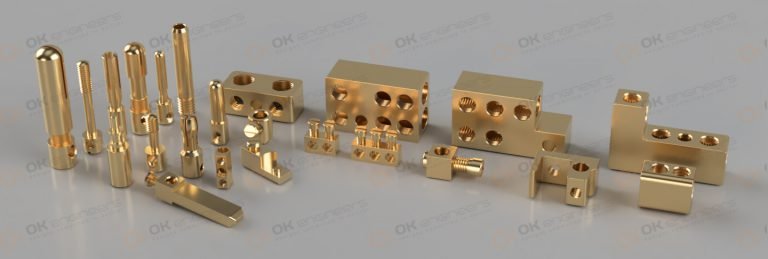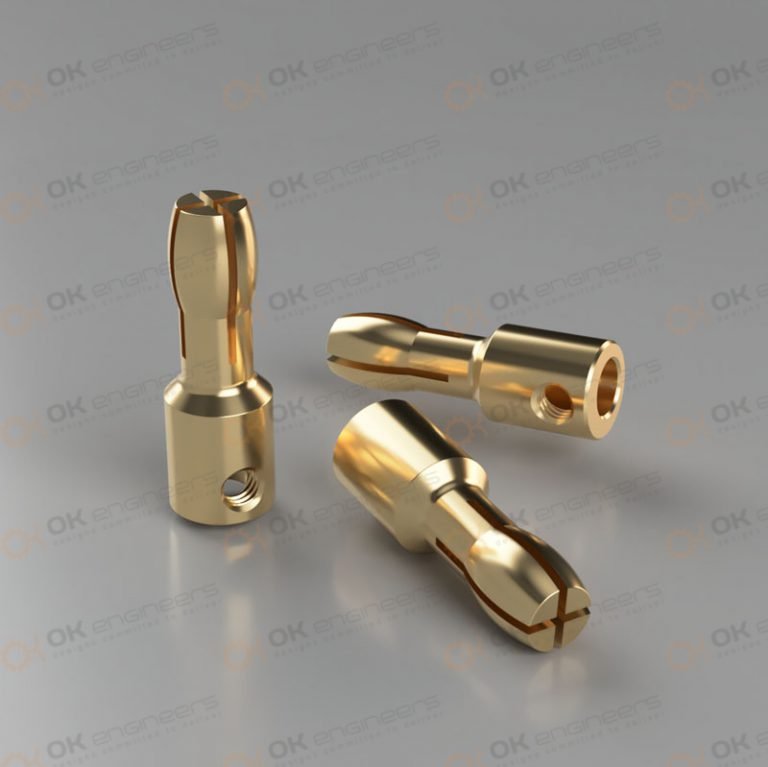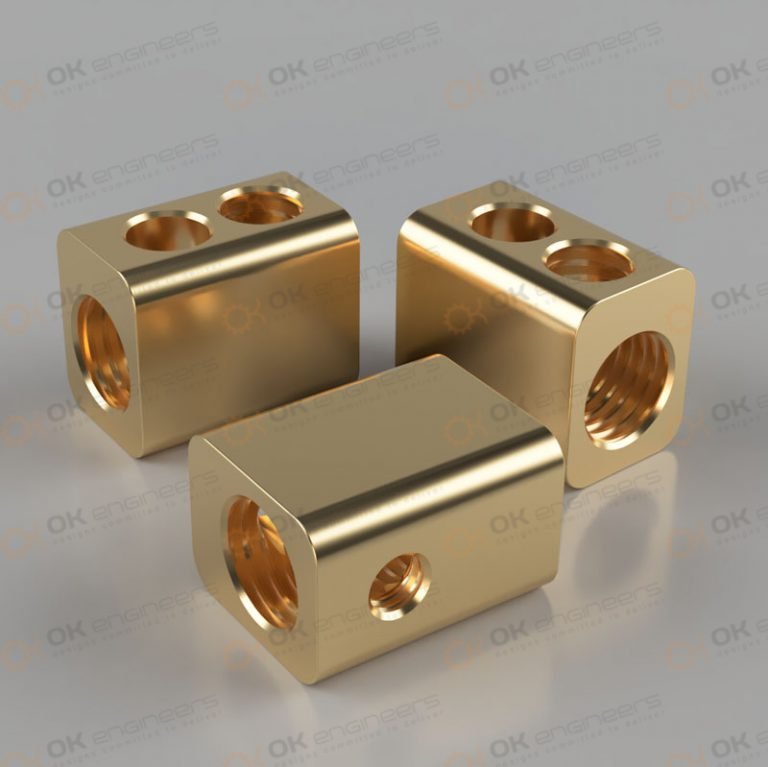Introduction
Brass electrical parts have special significance in the field of electrical engineering that extends beyond their practical use. Not only are they essential parts of many electrical systems, but they are also significant in terms of longevity, conductivity, and even appearance. Brass Electrical Components play a variety of roles in contemporary industries, which can be better understood by examining their minute details.This article explores the multifaceted significance of brass electrical Components highlighting their indispensable role in modern engineering and design.
Brass Electrical Parts Applications Across Industries
The versatility of Brass Electrical Parts transcends industry boundaries, finding application in diverse sectors such as:
- Automotive: Brass connectors and terminals play pivotal roles in automotive electrical systems, ensuring seamless communication between various components and reliable operation under demanding conditions.
- Telecommunications: In the realm of telecommunications, brass connectors facilitate high-speed data transmission in networks, ensuring low signal loss and optimal performance.
- Renewable Energy: The burgeoning renewable energy sector relies on Brass Parts for efficient power generation and distribution in solar panels, wind turbines, and other renewable energy systems.
- Consumer Electronics: From smartphones to household appliances, brass components contribute to the functionality and longevity of consumer electronics, thanks to their conductivity and durability.
Aesthetic Appeal and Customisation
While functionality remains paramount, the aesthetic appeal of Brass Electrical Components should not be overlooked. The distinct golden hue of brass adds a touch of elegance to electrical installations, making them visually appealing in architectural and interior design contexts. Furthermore, brass components can be customised through various finishing techniques, including plating, polishing, and antiquing, to suit specific aesthetic preferences.
Brass in Interior Design
In residential and commercial spaces, Brass Parts serve as both functional elements and decorative accents. Switches, sockets, and lighting fixtures crafted from brass not only contribute to the overall design scheme but also convey a sense of sophistication and craftsmanship.
Customisation Options
Manufacturers offer a plethora of customization options for Brass Parts, allowing architects, interior designers, and homeowners to tailor these components to their exact specifications. Whether it’s selecting a specific finish, engraving designs, or incorporating intricate detailing, the versatility of brass enables endless creative possibilities.
Environmental Considerations
In an era marked by growing environmental consciousness, the choice of materials in electrical engineering carries significant implications. Brass Electrical Parts align with sustainability goals on multiple fronts:
- Recyclability: Brass is highly recyclable, with the potential to be reused indefinitely without compromising its properties. This inherent recyclability reduces reliance on finite resources and minimises waste in manufacturing processes.
- Energy Efficiency: The conductivity of brass contributes to energy efficiency in electrical systems, helping reduce overall energy consumption and greenhouse gas emissions.
- Longevity: The durability of Brass Parts translates to extended service life, reducing the frequency of replacements and associated environmental impacts.
Innovations and Advancements
The realm of Brass Electrical Components continues to evolve with ongoing innovations and advancements. Engineers and manufacturers are constantly exploring new alloys, production techniques, and design concepts to enhance the performance, efficiency, and aesthetics of brass components.
Alloy Development
Research in metallurgy has led to the development of advanced brass alloys tailored for specific electrical applications. These alloys may incorporate additional elements. Such as lead, tin, or aluminium to impart desirable properties such as improved machinability, higher conductivity, or enhanced corrosion resistance.
Precision Manufacturing
Advancements in manufacturing technologies, such as CNC machining and 3D printing, enable the production of Brass Parts with intricate designs and tight tolerances. This precision manufacturing ensures optimal functionality and compatibility in various electrical systems.
Smart Integration
In the era of smart technology and the Internet of Things (IoT), Brass Electrical Components are increasingly integrated with sensors, actuators, and communication modules to enable connectivity and data exchange. These smart brass components contribute to the development of intelligent electrical systems capable of monitoring, analyzing, and responding to real-time data.

Regulatory Compliance and Standards
The production and use of Brass Parts are governed by stringent regulations and industry standards to ensure safety, performance, and environmental responsibility. Manufacturers must adhere to these standards to maintain product quality and compliance with legal requirements.
Certification and Testing
Brass electrical components undergo rigorous testing and certification processes to validate their compliance. With relevant standards such as UL (Underwriters Laboratories), CSA (Canadian Standards Association), and IEC (International Electrotechnical Commission). These certifications provide assurance of quality, safety, and reliability to end-users and regulatory authorities.
Environmental Regulations
Environmental regulations, such as RoHS (Restriction of Hazardous Substances) and REACH (Registration, Evaluation, Authorization, and Restriction of Chemicals), restrict the use of hazardous substances in the production of Brass Components. Compliance with these regulations ensures the safety of both consumers and the environment by minimising exposure to harmful chemicals and pollutants.
Future Trends and Outlook
Looking ahead, the future of Brass Parts is characterised by continued innovation, sustainability, and integration with emerging technologies. Key trends shaping the industry include:
Sustainable Practices
The emphasis on sustainability drives the adoption of eco-friendly manufacturing processes, recyclable materials, and energy-efficient designs in Brass Electrical Parts production. Companies are investing in renewable energy sources, waste reduction strategies, and circular economy initiatives to minimise environmental impact throughout the product lifecycle.
Integration with IoT and AI
Brass Electrical Parts will play a crucial role in the proliferation of IoT devices and AI-powered systems, facilitating seamless connectivity, data exchange, and automation. Smart sensors, actuators, and control mechanisms embedded in brass components enable real-time monitoring, predictive maintenance, and energy optimization in electrical infrastructure.
Customization and Personalization
Consumer demand for customised solutions drives innovation in Brass Parts. With manufacturers offering a diverse range of designs, finishes, and features to cater to individual preferences and industry-specific requirements. Customizable brass components empower designers, engineers, and end-users to create unique and tailored electrical systems.


Conclusion
In conclusion, Brass Electrical Parts transcend their functional role to embody a fusion of performance, durability, aesthetics, and sustainability in modern electrical engineering. From their exceptional conductivity and corrosion resistance to their timeless elegance and adaptability to emerging technologies, brass components continue to shape the evolution of electrical systems across industries. As innovation accelerates and sustainability becomes paramount, Brass Parts remain at the forefront of advancements, ensuring the efficient, reliable, and environmentally responsible operation of electrical infrastructure worldwide.
Frequently Asked Questions (FAQs)
Why is brass preferred for electrical applications?
Brass offers a combination of excellent conductivity, durability, and corrosion resistance, making it well-suited for various electrical components. Its versatility and aesthetic appeal further contribute to its popularity in electrical engineering.
Are brass electrical parts suitable for outdoor use?
Yes, Brass Parts are highly suitable for outdoor use due to their inherent corrosion resistance. They can withstand exposure to moisture, UV radiation, and other environmental factors without deteriorating, making them ideal for outdoor lighting, power distribution, and other applications.
Can brass electrical parts be customised to match specific design preferences?
Absolutely. Manufacturers offer a wide range of customization options for Brass Components, including different finishes, engravings, and designs. This enables architects, interior designers, and homeowners to incorporate brass components seamlessly into their design concepts.
How does brass contribute to environmental sustainability in electrical engineering?
Brass’s recyclability, energy efficiency, and longevity align with sustainability goals in electrical engineering. By choosing brass parts, stakeholders can reduce resource consumption, minimise waste, and lower greenhouse gas emissions associated with electrical systems.
For More Info :
BRASS ELECTRICAL COMPONENTS, PARTS
You May Also Like :
Can Brass Be Used for Cooking? Unveiling the Culinary Secrets of this Timeless Alloy

